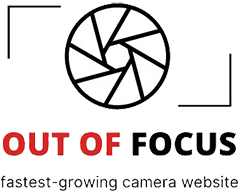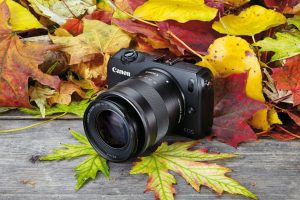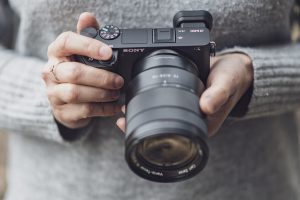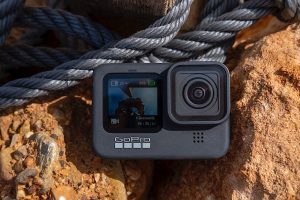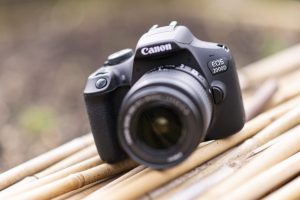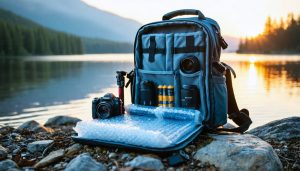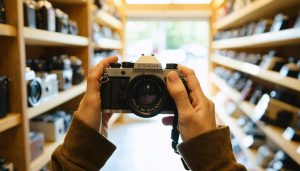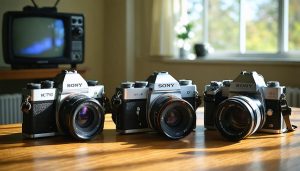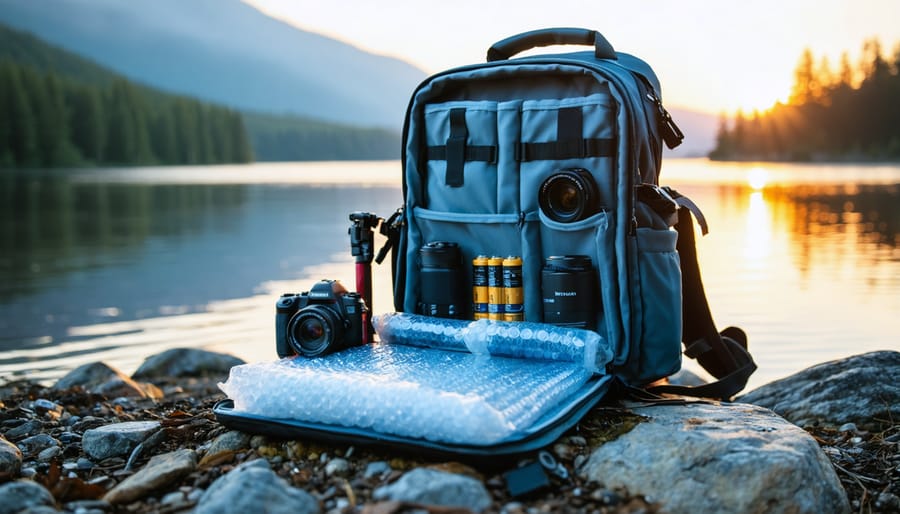
You’ve spent years perfecting your craft—learning to capture that perfect golden hour light, waiting patiently for wildlife to emerge, hiking miles into wilderness for a single frame. But here’s the uncomfortable truth: your nature photography business might be harming the very landscapes you’re passionate about protecting.
**The carbon footprint of a photography business is substantial.** International flights to exotic locations, expeditions burning through fuel, equipment manufacturing and disposal, energy-intensive printing processes, and plastic packaging all add up. A single photographer can generate several tons of CO2 annually through business operations alone. For those of us who photograph nature because we love it, this creates a painful contradiction.
**But sustainable photography isn’t about guilt—it’s about smart business decisions that benefit both your bottom line and the planet.** The good news? Going green doesn’t mean sacrificing quality, limiting creative opportunities, or watching profits disappear. Many sustainable practices actually reduce costs, strengthen client relationships, and differentiate your brand in an increasingly eco-conscious market.
**This isn’t theoretical advice or vague “do better” platitudes.** Over the next sections, you’ll discover specific, actionable strategies that working photographers are using right now to reduce their environmental impact. From extending gear lifecycles and choosing eco-friendly print labs to offsetting travel emissions and implementing sustainable packaging, these are practical solutions you can start implementing today—whether you’re a full-time professional or weekend warrior building a side business.
The photographers who thrive in the coming decade will be those who recognize that environmental responsibility and business success aren’t opposing forces—they’re complementary goals that, when aligned, create something more valuable than either alone.
The Environmental Footprint of Nature Photography
Carbon Costs of Getting the Shot
Getting to that perfect sunrise location or meeting clients at remote trailheads racks up carbon emissions faster than most photographers realize. Transportation typically represents the largest slice of a nature photography business’s carbon footprint, and it’s worth examining honestly.
Let’s start with the obvious: your vehicle choice matters significantly. That gas-guzzling 4×4 might feel essential for reaching backcountry locations, but newer hybrid SUVs now offer comparable ground clearance and all-wheel drive with half the emissions. Photographers like conservation specialist Cristina Mittermeier have transitioned to electric vehicles for local shoots, charging them with solar panels at their studios. While EVs have range limitations for wilderness expeditions, they excel at the routine client meetings and nearby nature reserves that constitute most shoots.
Location scouting deserves special attention because it’s easy to justify multiple reconnaissance trips. Consider combining scouting with actual shoots when possible, or leverage Google Earth and local photography groups to reduce unnecessary drives. One landscape photographer I know cut his annual mileage by 30% simply by clustering client sessions geographically rather than booking them chronologically.
For unavoidable long-distance travel, calculate your emissions using tools like the EPA’s Carbon Footprint Calculator and offset them through verified programs. Organizations like Cool Earth or the Rainforest Trust direct funds toward forest preservation, which resonates naturally with nature photography’s conservation mission. While offsets aren’t perfect solutions, they demonstrate accountability and help clients understand the true environmental cost of that remote mountain engagement session they’re requesting.
The Gear Problem Nobody Talks About
Let’s address something most photography articles skip over: the hidden environmental toll of our camera bags. Every time a manufacturer releases a new camera body or lens, it requires rare earth metals like neodymium and tantalum—materials extracted through mining processes that devastate landscapes and consume massive amounts of water and energy.
Here’s the uncomfortable truth: the average professional photographer upgrades gear every 2-3 years, often not because equipment fails, but because marketing convinces us we need the latest megapixel count or autofocus system. I’ve been guilty of this myself, trading in perfectly functional bodies for marginal improvements.
The electronics industry generates approximately 50 million tons of e-waste annually, and photography gear contributes its share. Camera bodies contain circuit boards, batteries, and plastics that rarely get properly recycled. Even when we trade equipment in, much of it eventually ends up in landfills or informal recycling operations in developing countries, where toxic materials leach into soil and water.
The upgrade cycle isn’t just expensive—it’s environmentally costly. Consider this: manufacturing a single DSLR camera produces roughly 88 pounds of CO2 emissions, equivalent to driving about 100 miles. Multiply that across an industry obsessed with constant innovation, and the impact becomes significant.
The solution isn’t abandoning gear entirely, but being more intentional about purchases, maintaining equipment longer, and supporting manufacturers who prioritize repairability and responsible sourcing. Your 5-year-old camera likely captures better images than you give it credit for.
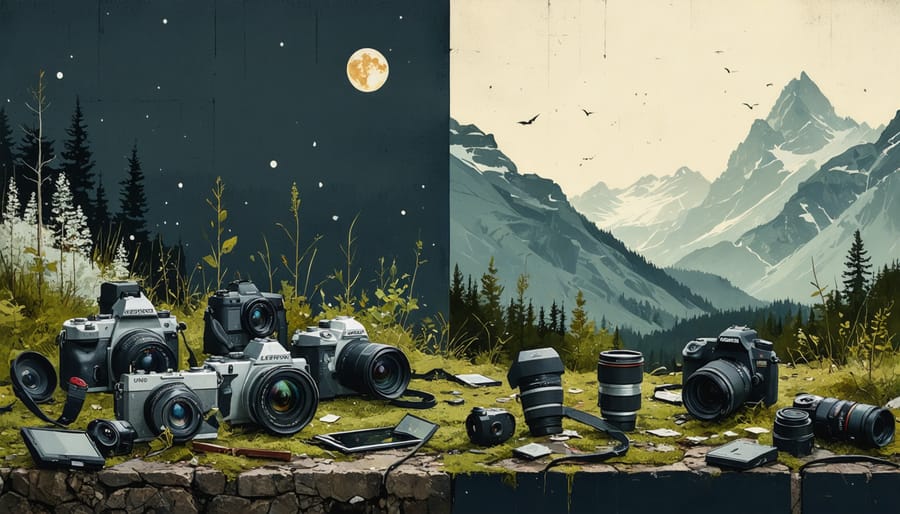
Building a Sustainable Gear Strategy
Buy Once, Buy Right
The outdoor gear industry thrives on constant upgrades, but nature photographers can buck this trend by investing strategically in equipment built to last decades, not just until the next model release.
Consider the Nikon D850, released in 2017. This workhorse camera continues delivering professional results for countless nature photographers today, with its robust weather sealing and shutter rated for 200,000 actuations. Many professionals report exceeding 300,000 shots without failure. Similarly, Canon’s 5D Mark III (2012) remains in active use by wildlife photographers who prioritize reliability over megapixel counts.
High-quality lenses often outlive camera bodies by decades. The Canon EF 70-200mm f/2.8L IS II USM, introduced in 2010, still commands respect and holds its value because its optical performance rivals newer models. Professional nature photographer Frans Lanting has famously used some of his lenses for over twenty years, demonstrating that exceptional glass remains relevant across multiple camera body generations.
When purchasing, prioritize metal construction over plastic, weather sealing that withstands harsh field conditions, and brands with established repair networks. A $3,000 lens used for fifteen years costs $200 annually, while replacing a $1,000 lens every three years costs $333 annually—and generates substantially more waste.
Research used markets carefully. A well-maintained ten-year-old professional lens often outperforms a new consumer-grade alternative while keeping functional equipment in circulation. Check shutter counts on used bodies, inspect lens elements for fungus or separation, and always test autofocus accuracy before purchasing.

The Second-Hand Advantage
Buying second-hand camera gear isn’t just budget-friendly—it’s one of the most impactful sustainability choices you can make as a nature photographer. Manufacturing a single DSLR camera body generates approximately 80kg of carbon emissions, not to mention the water consumption and toxic mining required for rare earth elements in sensors and electronics.
Quality used equipment performs identically to new gear in most cases. A three-year-old lens still captures the same sharpness as when it rolled off the production line. I’ve purchased several used telephoto lenses that were practically mint condition at 40% off retail price, and they’ve performed flawlessly for years.
Where can you find reliable pre-owned gear? KEH Camera, MPB, and B&H’s used department all grade equipment condition thoroughly and offer warranties. Local camera shops often have consignment sections, and photographer forums like Fred Miranda occasionally feature gear from retiring professionals. Facebook Marketplace and eBay work too, though you’ll need to inspect items carefully.
Each time you choose used equipment over new, you’re preventing functional gear from becoming e-waste while eliminating the manufacturing footprint of a new product. It’s a win for your wallet and the wild places you photograph.
Responsible Disposal and Recycling
When your camera body or lenses reach the end of their useful life in your business, resist the temptation to toss them in the trash. Photography equipment contains valuable materials that can be recovered, and many components contain substances that shouldn’t end up in landfills.
Start with manufacturer take-back programs. Canon, Nikon, and Sony all offer recycling initiatives where you can send old equipment for proper disposal. These programs ensure that metals, plastics, and electronic components are separated and processed correctly.
For gear that still functions but no longer meets your professional needs, consider donation. Organizations like Cameras for Kids and the Film Photography Project accept working equipment and place it with students and aspiring photographers. I’ve donated several older DSLRs to a local high school’s photography program, giving students hands-on learning opportunities they wouldn’t otherwise have.
KEH Camera and MPB run trade-in programs that refurbish used equipment, extending its lifecycle significantly. You’ll receive credit toward future purchases while keeping functional gear in circulation. Local camera shops often accept donated equipment for their rental programs or sell it affordably to beginners, creating a circular economy within your photography community.
Sustainable Travel and Location Practices
Smart Route Planning and Carbon Offsetting
Strategic travel planning can dramatically reduce your photography business’s carbon footprint while actually improving your workflow efficiency. Instead of making multiple trips to scattered locations, consider grouping shoots geographically. If you’re photographing wildlife in Montana, plan to shoot several projects or stock imagery sessions during a single extended trip rather than returning multiple times throughout the year.
Digital tools like Google Earth and mapping apps let you identify clusters of potential shooting locations before you leave home. One wildlife photographer I know schedules all his Pacific Northwest assignments within concentrated two-week periods, reducing annual travel by nearly 40% compared to his previous scattered approach. This batching strategy not only cuts emissions but also reduces travel expenses and burnout.
When local or regional travel isn’t feasible, prioritize direct flights over connections—takeoffs and landings consume disproportionate fuel. Choose airlines with newer, more fuel-efficient fleets and robust environmental commitments.
For unavoidable air travel, carbon offset programs offer a way to mitigate impact, though it’s crucial to choose carefully. Look for programs certified by Gold Standard or Verified Carbon Standard that fund verifiable projects like reforestation or renewable energy development. Calculate your trip’s emissions using calculators from organizations like atmosfair or myclimate, then purchase offsets directly through their platforms.
Remember, offsetting should complement—not replace—efforts to reduce travel in the first place. The most sustainable flight is always the one you don’t take.
Leave No Trace in Your Business
The Leave No Trace principles that guide responsible outdoor recreation should extend directly into how you conduct your nature photography business. This isn’t just about being a good steward personally—it’s about setting professional standards that protect the locations you profit from photographing.
Start by evaluating every shoot location for its ecological sensitivity. Before arriving with clients, scout areas to identify fragile vegetation, nesting sites, or sensitive habitats that need protection. Mark these zones clearly and establish designated pathways for your group to follow. When leading workshops or client sessions, position yourself and your gear first to model proper behavior—people naturally follow their leader’s example.
Consider implementing a “wildlife-first” policy in your contracts. This means explicitly stating that you’ll end sessions or relocate if wildlife shows signs of distress, even if it means disappointing clients in the moment. One Colorado-based photographer includes a clause requiring participants to stay at least 100 yards from large mammals, with immediate dismissal (without refund) for violations. While this might seem strict, it actually attracts more environmentally conscious clients.
Educate participants before every shoot. Send a pre-shoot email explaining your environmental protocols, proper footwear to minimize soil compaction, and location-specific guidelines. During shoots, take brief moments to explain why you’re asking people to avoid certain areas or behaviors. Most clients appreciate understanding the reasoning and often become advocates themselves.
Never disclose exact locations of sensitive subjects publicly, especially nesting sites or rare species. When sharing images, use general geographic descriptions rather than GPS coordinates or trail names. This professional discretion protects both the environment and maintains the exclusivity that premium clients often value, making conservation a business advantage rather than a limitation.
Eco-Friendly Printing and Product Fulfillment
Sustainable Printing Partners and Materials
Finding a printing partner that shares your environmental values doesn’t mean compromising on quality—it means being selective about who handles your work. The good news? More labs than ever are prioritizing sustainability without sacrificing the stunning reproduction your nature images deserve.
Start by asking potential labs direct questions about their practices. Do they use renewable energy? What’s their water recycling system like? Which inks and papers do they offer? Labs committed to sustainability will be transparent and often eager to discuss these details.
**Mpix**, one of North America’s larger photo labs, operates a carbon-neutral facility powered by renewable energy and uses water-based coatings on many products. Their parent company has invested heavily in sustainable operations, making them accessible for photographers at various price points.
For fine art prints, **Breathing Color** manufactures eco-friendly papers and canvases in the United States, reducing shipping emissions while offering archival-quality materials. Their bamboo and cotton-based substrates provide excellent alternatives to traditional papers.
In Europe, **WHCC Europe** and several smaller boutique labs have earned environmental certifications and use vegetable-based inks alongside FSC-certified papers. Meanwhile, **Canson** and **Hahnemühle** produce museum-grade papers with strong environmental credentials, available through various printing partners.
Consider building relationships with local labs too. Smaller operations often use sustainable materials and eliminating shipping reduces your carbon footprint significantly. Request sample prints on their eco-friendly stock—you might be surprised how beautifully your work translates to bamboo or hemp-based papers, adding another storytelling dimension to your nature photography.
Packaging That Doesn’t End Up in Landfills
Shipping prints and products doesn’t have to mean contributing to the plastic waste crisis. Many nature photographers are now switching to compostable mailers made from cornstarch or recycled paper, which break down naturally within months rather than centuries. Companies like noissue and EcoEnclose offer packaging solutions specifically designed for photographers that provide adequate protection without the environmental guilt.
Consider adopting a minimal packaging philosophy that still ensures your prints arrive safely. Use recycled cardboard backing boards, secure prints with paper corner protectors instead of plastic sleeves, and skip unnecessary tissue paper or bubble wrap. For framed prints, invest in mushroom-based packaging foam—a surprisingly effective biodegradable alternative that’s gaining traction in the industry.
Communicate your packaging choices to clients through a simple insert card explaining your commitment to sustainability. This transparency often resonates deeply with nature-loving customers who chose you specifically because they value environmental stewardship. Some photographers even offer a small discount to clients who opt for local pickup, eliminating shipping materials entirely while building personal connections. Remember, the goal isn’t perfection but continuous improvement—every plastic mailer you replace makes a difference.

Digital-First Delivery Options
Modern clients increasingly appreciate digital-first options, which naturally reduces your environmental footprint. Create premium digital galleries using platforms like Pixieset or ShootProof that allow clients to download high-resolution files, share with family, and order prints only when truly desired. This approach eliminates speculative printing while maintaining professional presentation.
Consider offering tiered packages where digital files are the foundation, with physical products as optional add-ons. For instance, deliver a complete digital landscape photography portfolio with unlimited downloads, then suggest eco-friendly print options for wall art or gifts. Many clients never print most images anyway, so you’re simply aligning offerings with actual usage patterns.
To maintain perceived value, enhance your digital deliverables with custom presentation—branded galleries, slideshow options, and printing guides. Educate clients on digital archiving best practices to ensure their investment lasts. This model reduces waste, lowers your overhead costs, and gives clients flexibility while maintaining your professional standards.
Green Business Operations and Studio Management
Energy-Efficient Workflow and Storage
The digital side of your nature photography business consumes more energy than you might think. Every time you upload images to the cloud, edit on your computer, or store terabytes of RAW files, you’re drawing power—and that power has a carbon footprint. The good news? Small changes in your workflow can significantly reduce your environmental impact without compromising efficiency.
Start by choosing cloud storage providers committed to renewable energy. Companies like Google Drive and Microsoft OneDrive now run on 100% renewable energy in many regions, while specialized photography platforms are following suit. When selecting studio management software, prioritize options with cloud-based infrastructure powered by green data centers.
Your physical equipment matters too. Modern laptops with Apple’s M-series chips or newer Intel processors consume substantially less power while delivering better performance for photo editing. A photographer I know switched from a desktop workstation to a MacBook Pro and cut her editing-related electricity use by 60%.
Implement a ruthless culling process immediately after shoots to avoid storing thousands of unnecessary images. Every photo you delete is storage space—and energy—saved. Consider archiving older projects to external hard drives that aren’t constantly powered, keeping only active work on energy-intensive cloud servers.
Finally, configure your devices for maximum efficiency: enable sleep modes, reduce screen brightness, and close resource-heavy applications when not actively editing. These seemingly minor adjustments compound into meaningful energy savings over time.
Sustainable Office Supplies and Materials
Your business materials make a statement before you even say hello. Switching to sustainable options shows clients you walk the talk—and thankfully, eco-friendly doesn’t mean amateurish anymore.
Start with **recycled or tree-free business cards**. Companies like Moo and Printed Mint offer cards made from 100% recycled paper, cotton, or bamboo that feel substantial and professional. I’ve used recycled cotton cards for years, and clients regularly comment on their quality. Consider embedding wildflower seeds in your cards—recipients can plant them instead of tossing them in a drawer.
For marketing materials, **choose FSC-certified paper** and soy or vegetable-based inks. When printing portfolios or brochures, select printers committed to carbon-neutral operations. Many professional print houses now offer these options at comparable prices to conventional printing.
In your studio or office, swap disposables for reusables. Use refillable pens, rechargeable batteries for accessories, and cloth cleaning materials instead of disposable wipes. Buy printer cartridges with recycling programs, or switch to a service that refills empties.
Even small changes add up. Sustainable office supplies typically represent a minimal expense in your overall budget—similar to smart financial management for photographers, it’s about making intentional choices that align costs with values while maintaining the professional standards your business demands.
Marketing Your Sustainability Commitment
Telling Your Sustainability Story
Your sustainability efforts only matter if your audience knows about them—but authenticity is crucial. Skip the greenwashing and share your journey honestly, including the challenges you’re still working to overcome.
Start by integrating your sustainability story into your website’s About page and relevant social media profiles. Explain *why* environmental responsibility matters to you personally. Perhaps a specific landscape you photographed is now threatened by climate change, or you witnessed pollution firsthand during a shoot. These personal connections resonate far more than generic statements about “caring for the planet.”
Document your sustainability practices through behind-the-scenes content. Show clients your eco-friendly packaging before shipping, share your decision-making process when choosing sustainable materials, or post about the carbon offset program you’ve joined. This transparency builds trust and differentiates you from competitors.
Consider how your environmental values integrate with modern photography business models and photography marketing strategies. Feature your sustainability credentials in client proposals and portfolios—many organizations now prioritize vendors with documented environmental commitments.
Create an annual sustainability report, even a simple one-page summary, highlighting metrics like paper saved, carbon offset, or donations to conservation organizations. This demonstrates accountability and continuous improvement, showing clients you’re serious about your environmental impact beyond marketing speak.
Avoiding Greenwashing Pitfalls
Here’s the hard truth: claiming to be an “eco-friendly” nature photographer while flying internationally every month for shoots doesn’t pass the smell test. Your clients can spot greenwashing from a mile away, and nothing damages your reputation faster than environmental claims you can’t back up.
Start with honest communication about your actual practices. If you’ve switched to carbon-neutral printing, great—say so and explain how. If you’re still driving a gas-guzzling SUV to remote locations because it’s the only vehicle that safely gets you there, acknowledge it. Authenticity builds trust more effectively than perfect sustainability credentials ever will.
Back up every environmental claim with tangible proof. Don’t just say you “support conservation”—show the receipts. Share which organizations receive your donations, display certifications from recognized eco-labels, or document your transition to sustainable materials through behind-the-scenes posts.
Perhaps most importantly, be transparent about your ongoing journey. Frame sustainability as a work-in-progress rather than a finished achievement. Share what you’re actively working to improve: “I’m researching electric vehicle options for next year’s upgrade” or “I’m testing recycled packaging materials this quarter.” This vulnerability demonstrates genuine commitment rather than performative environmentalism, and it gives your audience permission to join you on an imperfect but meaningful path toward better practices.
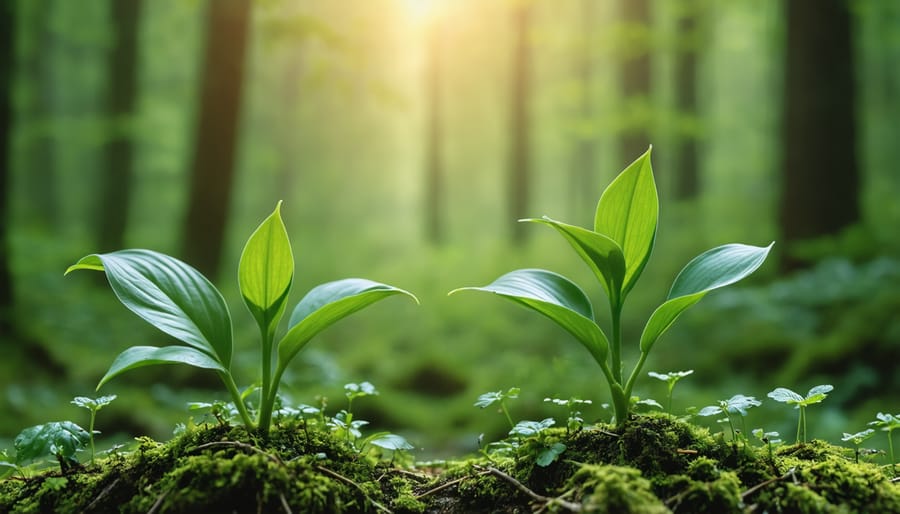
Real-World Examples: Nature Photographers Doing It Right
Let’s look at photographers who’ve cracked the code on running profitable, planet-friendly businesses without compromising their creative vision.
**Conservation Photographer Cristina Mittermeier** has built an impressive career while keeping sustainability front and center. Her company SeaLegacy doesn’t just photograph marine ecosystems—they’ve structured their entire business model around conservation outcomes. Mittermeier uses carbon-offset programs for every assignment, partners with eco-conscious brands that align with her values, and reinvests a portion of profits into marine protection initiatives. What’s particularly smart is how she’s turned this commitment into a unique selling proposition, attracting clients who specifically want photographers with genuine environmental credentials.
**Paul Nicklen**, another conservation photographer, demonstrates how sustainable photography studios can thrive financially. His business generates revenue through limited-edition prints produced on recycled materials with eco-friendly inks, virtual workshops that eliminate travel emissions, and licensing fees where contracts include environmental impact clauses. He’s proven that clients will pay premium prices when your work demonstrably contributes to conservation efforts.
On a smaller scale, **UK-based wildlife photographer Marina Cano** shows sustainability doesn’t require a massive budget. She exclusively shoots local subjects within a 50-mile radius, dramatically reducing her carbon footprint while developing deep expertise in regional wildlife. This geographic focus has actually strengthened her brand identity and attracted clients looking for authentic, local nature content. She’s partnered with local conservation groups, creating a symbiotic relationship where her photography supports their fundraising while they provide access to protected areas.
**Andy Parkinson**, specializing in British wildlife, took the bold step of selling his car and relying on public transport and cycling for his photography work. Far from limiting him, this constraint forced creative problem-solving that improved his work. He now offers photo walks accessible by public transit, attracting environmentally conscious clients and reducing overhead costs simultaneously.
These photographers prove that sustainable practices aren’t obstacles to profitability—they’re differentiators in an increasingly crowded market where conscious consumers seek businesses matching their values.
As nature photographers, we hold a unique responsibility that extends beyond capturing beautiful images. We’re documentarians of the natural world, witnesses to its fragility, and educators who shape how others perceive our environment. This privileged position comes with an obligation to ensure our business practices don’t contribute to the very degradation we’re documenting through our lenses.
The environmental impact of your photography business is real, but the solutions don’t require a complete business overhaul overnight. Start with the changes that resonate most with your values and situation. Perhaps it’s switching to a print-on-demand model to eliminate waste, or maybe it’s committing to carbon-offset your next three shoots. You might begin by researching one refurbished gear purchase or consolidating your next location scouting trip with other projects. Each sustainable choice compounds over time, creating meaningful change without overwhelming your operations or budget.
Remember that perfection isn’t the goal—progress is. You don’t need to transform every aspect of your business simultaneously. Even professional photographers at the top of their field are still learning and adapting their practices. What matters is making conscious decisions that align your work with the landscapes and wildlife you’re passionate about protecting.
Your photography business can be both profitable and purposeful. By implementing even a handful of the strategies we’ve discussed, you’re joining a growing community of photographers who understand that sustainable practices aren’t just good ethics—they’re good business. The natural world has given us our careers; now it’s time to give something back. Start today with one change, and build from there.
